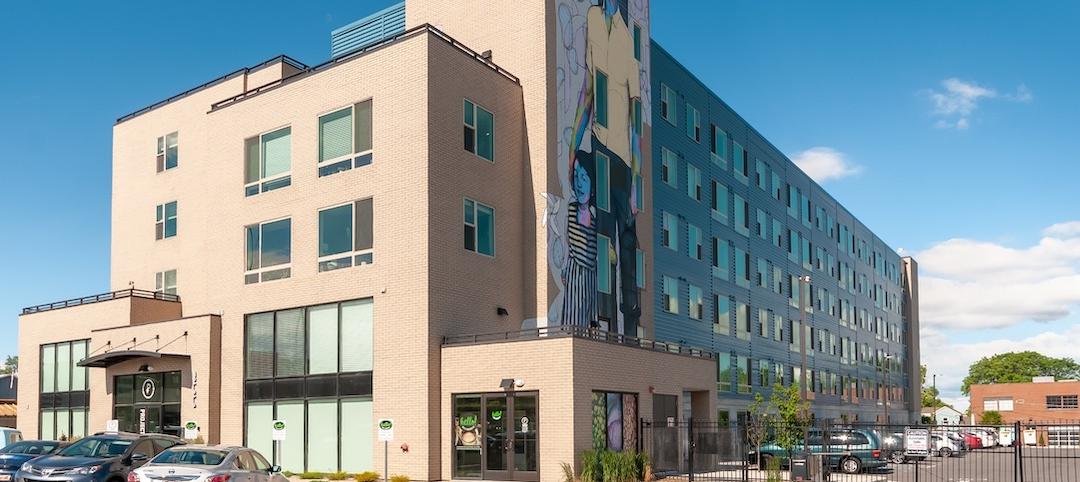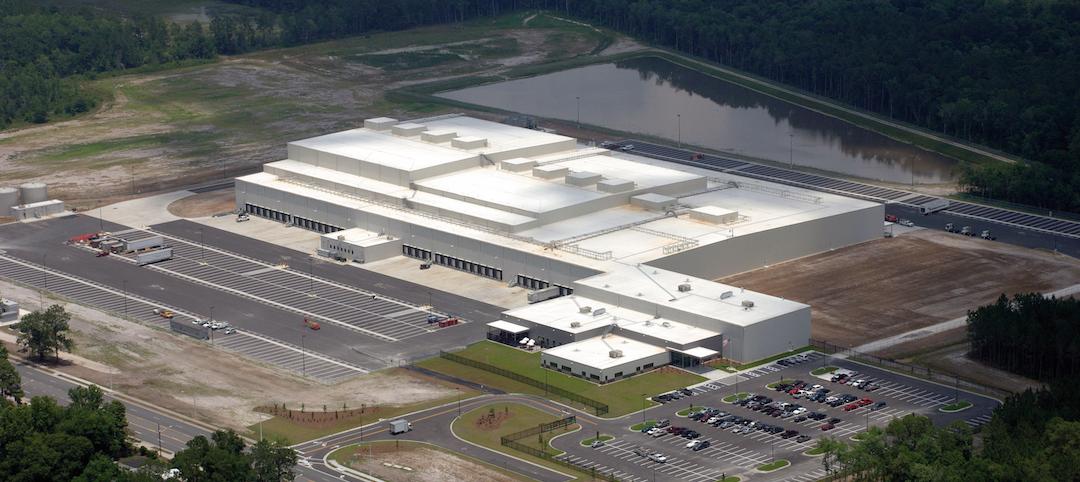Total construction to rise 5.1% in 2011
Spending for U.S. nonresidential building projects plunged nearly 23% in 2010, even as construction spending for heavy/engineering and residential projects dropped less than 2%. Nonresidential’s decline pushed total 2010 construction spending down 10%. The fourth consecutive annual decline brought the level of total construction spending to 30% below the pre-recession peak. Construction spending will be rising from the end of 2010 through 2011 and for several years beyond. The construction recovery comes an unusually long 18 months after recovery began in the overall economy and will be relatively slow.
Total U.S. construction spending will increase 5.1% in 2011. The gain from the end of 2010 to the end of 2011 will be 10%. The biggest annual gain in 2011 will be 10% for new residential construction, far above the 2-3% gains in all other construction sectors.
The delayed and slow construction recovery is due to both the subpar economic recovery and the unique restraints in the construction market, notably the collapse of the highway and housing finance systems (with no replacement in sight for either), a large surplus of residential space, and the weakened financial condition of developers and homebuyers.
Contractors and their suppliers will begin 2011 in a recession-cost environment. Labor is abundant, with annual wage gains still in the 0.0-1.0% range. Credit rates are extremely low but cautious loan approval standards exclude a relatively large share of loan applicants from the capital market. Costs are steady to slightly down for construction materials priced in the U.S. market, such as lumber and concrete, but erratically rising at a 5% or more annual pace for materials priced in international markets, such as metals, plastics, and energy. In order to get work contractors will still set their margins below the bottom of the usual range, and new projects will continue to draw far more than the usual number of bids.
The economic environment for contractors will improve in 2011. But it will continue to worsen early in the year for many types of public work and in the most depressed markets along the southern border and in the Rocky Mountain states. Some improvement will be clearly noticeable by the summer, with that pace accelerating late in the year. Credit rates will be rising but still very low by mid-year. The improved environment will firm materials pricing first before some contractors are able to raise bid prices. By the end of 2011, the materials price inflation trend will be back in the 5-6% annual increase range due to relatively stronger economic growth in the rest of the world as well as the 10% pickup in U.S. construction spending over the previous 12 months.
U.S. GDP growth will move from the 2% pace during most of 2010 to a 2.5-3.0% pace in 2011. This is unusually slow at the mid-point of an economic recovery: 4% or more is typical. Subpar economic growth has a magnified impact on all capital goods industries, including construction. Economic growth will be restrained by the lingering credit problems that began late in 2008 and investor and consumer uncertainty after the massive changes in operating rules made in Washington in the last two years. Note that the details of many of the changes are not yet known, and the results of the November election may revise or rescind some of the changes. Uncertainty always means caution and delayed spending. Beyond 2011, GDP growth will again be above 3.0%, permitting a quickening of the construction recovery.
Construction spending for nonresidential buildings will increase 3.0% in 2011 and 10% from the end of 2010 to the end of 2011. The gain will jump to well over 10% in 2012. For developer-financed projects the turnaround will be dramatic. Spending will rise 2% in 2011 after two years of 30% declines. This market will be expanding at a 15% annual pace by the end of 2011. The steep decline in project starts has already ended. Architects are already reporting rising design activity.
Spending for institutional buildings will rise 4.2% in 2011, mostly for nonprofit and private projects; spending on public buildings will not improve and may slip slightly under pressure from ebbing stimulus funds and cuts in state and local budgets after rainy day funds have been depleted. State taxes began rising in spring 2010 but remain 15% below the pre-recession level.
Housing starts will rise 24% in 2011 but only to about half of the underlying demographic demand trend. Nonetheless, this will generate the usual associated site and utility work as the development of new residential communities resumes, especially in the South and West. Note that new homes will be up to 10% smaller and on smaller lots than in pre-recession developments.
Heavy construction spending, as usually happens, slowed but did not decline while the overall economy was in recession. Then the usual drop in heavy construction activity early in the recovery period was unusually slim because of the massive amount of federal spending in the stimulus plan and a variety of smaller initiatives, such as Build America Bonds. Nominal dollar heavy construction spending is currently about the same as two years ago. Only a 5-6% gain in nominal dollar spending is expected in the next two years but rising project costs will account for more than all of this gain. The price of stimulus funding in 2009-10 is no growth in 2011-12 when federal emergency funding ebbs.
Three heavy sectors will see modest spending gains in 2011 while the remaining three will see no change or small declines. The strongest sectors will be water and sewer (+7.8%), highways and bridges (+6.7%), and communications (+3.7%). The water and sewer gain is due to delayed stimulus funding and the residential market improvement. The highway gain is due to bringing private funds into the market. The weak sectors will be power (-2.8%), conservation (-1.9%), and transportation facilities (+0.2%). Power always declines at this stage of the business cycle.
In spite of sluggish construction activity, domestic manufacturers of construction equipment have increased their sales nearly 60% in the last year. The added sales have been to rebuild rental fleets and supply the relatively strong manufacturing, utility, farming, mining and export markets. Production is still short of capacity so equipment prices are up only 1.1% in the last year. Ahead, the added demand for equipment use on job sites will modestly boost both equipment prices and rental rates by mid-2011. BD+C
Related Stories
Multifamily Housing | Sep 12, 2019
Meet the masters of offsite construction
Prescient combines 5D software, clever engineering, and advanced robotics to create prefabricated assemblies for apartment buildings and student housing.
Cultural Facilities | Sep 11, 2019
The Kennedy Center expands for the first time since its 1971 debut
The REACH, with three pavilions on a generous lawn, adds openness and light to this performance space.
Architects | Sep 11, 2019
Buoyed by construction activity, architect compensation continues to see healthy gains
The latest AIA report breaks down its survey data by 44 positions and 28 metros.
Multifamily Housing | Sep 10, 2019
Carbon-neutral apartment building sets the pace for scalable affordable housing
Project Open has no carbon footprint, but the six-story, solar-powered building is already leaving its imprint on Salt Lake City’s multifamily landscape.
Giants 400 | Sep 9, 2019
Top 70 Industrial Sector Architecture Firms for 2019
AECOM, Stantec, Ware Malcomb, FSB, and Macgregor Associates top the rankings of the nation's largest industrial sector architecture and architecture engineering (AE) firms, as reported in Building Design+Construction's 2019 Giants 300 Report.
Giants 400 | Sep 9, 2019
2019 Industrial Sector Giants Report: Managing last mile delivery
This and more industrial building sector trends from Building Design+Construction's 2019 Giants 300 Report.
Codes and Standards | Sep 9, 2019
Free app calculates maximum allowable heights and areas for buildings
A free app that calculates the maximum allowable heights and areas for buildings of various occupancy classifications and types of construction has been released.
Retail Centers | Sep 6, 2019
Another well-known retailer files for bankruptcy: Here's the solution to more empty anchor stores
Where can you find the future of retail? At the intersection of experience and instant gratification.
Giants 400 | Sep 5, 2019
Top 110 Hotel Sector Architecture Firms for 2019
Gensler, WATG, HKS, HBG Design, and Steelman Partners top the rankings of the nation's largest hotel sector architecture and architecture engineering (AE) firms, as reported in Building Design+Construction's 2019 Giants 300 Report.
Architects | Sep 5, 2019
AIA launches landmark initiative to drive climate action
AIA Board of Directors approves member-led resolution to rally architects in mitigating and adapting the built environment.

















